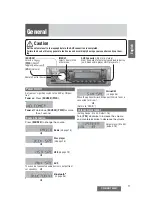
AT-MCF2000 Media Converter Series Installation Guide
Section I: Features
83
Guidelines to Building a Stack
Here are the guidelines to building a management stack of AT-MCF2000
and AT-MCF2300 Chassis:
❒
A stack can have up to sixteen media converter modules.
❒
A stack can have both AT-MCF2000 and AT-MCF2300 Chassis.
❒
The maximum distance between two Stack ports is 100 meters (328
feet).
❒
The chassis containing the AT-MCF2000M Management Module has
to be at one end of the stack.
❒
The other units are connected to the stack with the AT-MCF2000S
Stacking Module.
❒
Each unit has to be assigned a unique chassis ID number from 0 to 31.
This number is set with a jumper on the AT-MCF2000M Management
Module and with DIP switches on the AT-MCF2000S Stacking Module.
The jumper and with DIP switches have to be set before the modules
are installed in the units because they are not accessible afterwards.
❒
The ID numbers of the units in a stack do not have to be sequential or
reflect the numerical positions of the chassis in the daisy chain
topology.
❒
The stacking feature does not require an IP address configuration on
the management module.
❒
A chassis that has the AT-MCF2000S Stacking Module has to be
managed through the stack because the module does not have a port
for local management.
❒
There cannot be any network devices, such as routers or Ethernet
switches, between two Stack ports.
❒
The units in a stack function as independent media converters. The
traffic of a media converter channel on a module is restricted to its
channel and cannot crossover to another channel in the same chassis
or another unit in the stack.
❒
Disconnecting the stacking cables does not interfere with the
operations of the media converter modules because the stacking ports
carry just management traffic.
❒
The chassis ID numbers of the units are not adjustable through the
management software.
Summary of Contents for AT-MCF2000
Page 8: ...Contents 8...
Page 12: ...Tables 12...
Page 18: ...Preface 18...
Page 20: ...20 Section I Features...
Page 26: ...Chapter 1 AT MCF2000 Multi channel Media Converter Series 26 Section I Features...
Page 54: ...Chapter 3 AT MCF2012LC AT MCF2012LC 1 and AT MCF2032SP Modules 54 Section I Features...
Page 72: ...Chapter 4 AT MCF2000M Management Module 72 Section I Features...
Page 84: ...Chapter 5 AT MCF2000S Stacking Module 84 Section I Features...
Page 86: ...86 Section II Installation...
Page 90: ...Chapter 6 Reviewing the Safety Precautions 90 Section II Installation...
Page 92: ...Chapter 7 Selecting a Location 92 Section II Installation...
Page 96: ...Chapter 8 Unpacking the AT MCF2000 or AT MCF2300 Chassis 96 Section II Installation...
Page 98: ...Chapter 9 Removing the Rubber Feet 98 Section II Installation...
Page 106: ...Chapter 11 Installing the AT MCF2KFAN Module 106 Section II Installation...
Page 110: ...Chapter 12 Installing a Media Converter Module 110 Section II Installation...
Page 122: ...Chapter 15 Installing the Chassis in an Equipment Rack 122 Section II Installation...
Page 128: ...Chapter 17 Installing the SFP Modules in the AT MCF2032SP Module 128 Section II Installation...
Page 130: ...Chapter 18 Cabling the Ports on the Media Converter Module 130 Section II Installation...
Page 134: ...Chapter 19 Cabling the AT MCF2000M and AT MCF2000S Modules 134 Section II Installation...
Page 138: ...Chapter 20 Powering on the Chassis 138 Section II Installation...
Page 156: ...Chapter 23 Troubleshooting the Modules 156 Section II Installation...
Page 186: ...Appendix C Cleaning Fiber Optic Connectors 186...
Page 190: ...Index 190...
















































